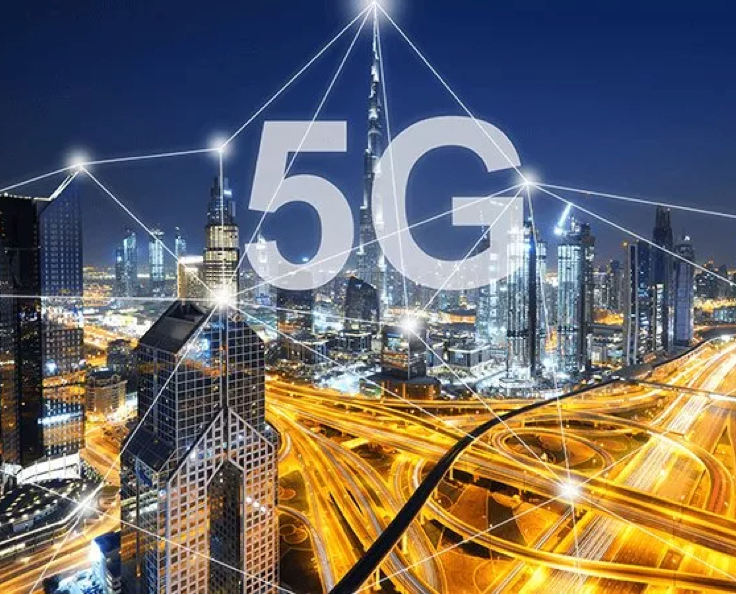Everything You Need to Know About 5G
Everything You Need to Know About 5G
*iSelect’s partnered with CIMET to help you compare a range of internet plans and providers. Not all plans or providers in the market are compared and not all plans or special offers are available at all times, through all channels or in all areas. Not all plans available from CIMET’s providers are compared and due to commercial arrangements, area or availability, not all plans compared will be available to all customers. Learn more
Compare NBN plans the easy way
Save time and effort by comparing a range of NBN plans and providers online*
What is 5G?
How is 5G different to earlier generations?
What technology does 5G use?
What speeds can 5G achieve?
Where is 5G available in Australia?
Can I still use 3G and 4G?
Where can I compare Internet Plans?
What is 5G?
5G is the fifth generation of global wireless technology — our way to use mobile and internet services. Where generation one could barely handle transmitting voice calls, 5G is made for the modern world with lots of data being sent by lots of devices at once.
How is 5G different to earlier generations?
While 3G and 4G came with upgrades that changed the way we use mobile phones and devices, 5G has them beat on a number of counts. From being more efficient so your battery lasts longer while connected to the 5G network to reducing lag and load latency to practically an unnoticeable degree, 5G is dialling things up.
These changes mean you’ll likely have a smoother experience using your mobile phone to call, text and browse the web. Plus, you might find things at work change too, from futuristic robotics control to more devices connected and talking to each other for improved automation.
What technology does 5G use?
Like the generations before it, 5G uses radio waves to transmit data. It uses a mixture of bands to achieve coverage and capacity in one fell swoop, including taking advantage of mmWave (millimetre wave) frequencies.
Without needing to go and get yourself an electrical engineering degree, this is how the 5G network works.
You’ve got your towers and masts from the 4G network because reusing and recycling is something we can all get behind. Then, for the 5G network, heaps of small cells are added. These are essentially little antennas that help pass along the mmWave frequency. You might even see them sitting on light posts or electricity poles. These little guys have a short connection range and aren’t so good at talking through walls, so they need to be in clusters. However, they can transmit so much data on the mmWaves.
Along with the small cells, the 5G network also has macro cells with MIMO (multiple input, multiple output) antennas so that all that data can be sent and received at the same time. You can think of these like a train versus a motorbike, one can carry far more people. And, when you’re dealing with big population centres, like a CBD, there’s quite a few people using their phones and the 5G network at any given time.
So, when you connect to the 5G network, you’ll be doing so either through a small cell or a macro cell, sending and receiving data via radio waves.

What speeds can 5G achieve?
One of 5G’s greatest features could be its speed. In theoretical circumstances, it’s 100 times faster than 4G.1Business Victoria – What 5G means for your business Think downloading a two-hour movie in 10 seconds rather than seven minutes.2Australian Government – What are the benefits of 5G? Of course, the reality is a little different. You’re likely to still find 5G faster but only about 10 times faster.3Business Victoria – What 5G means for your business But I think we’d all agree that 10 times more money would be pretty great, so why not enjoy 10 times more speed?
If you’re looking to try and optimise your 5G speed experience, it may help to be aware of things like:
- How hilly your location is
- How far you are from the base station
- Unfavourable weather conditions
- The hardware and software on your device
- The web servers of your destination and whether they’re handling the amount of traffic or not
Additionally, depending on your mobile provider, they may also have speed caps in place.
Where is 5G available in Australia?
5G could already be available in your area or it may be on its way. As of late 2023, all the Mobile Network Operators (Telstra, Optus and TPG) had presences in most capital cities through to remote Australia. However, it’s the capital cities that are generally enjoying the majority of 5G sites and unfortunately the NT is feeling a bit left out with not even Darwin having 5G yet.
The aim though, at least for the Telstra 5G network, is to have 95% of Australians able to access 5G by 2025.4Telstra – Introducing T25: our plan for growth and enhanced customer experiences
Can I still use 3G and 4G?
3G’s days are numbered, if not already over. The TPG 3G network has already been switched off, while Telstra plans to shut theirs down by 30th June 2024 and Optus’ will close soon after on the 1st of September 2024.5Australian Government – 3G network switch off
If you haven’t already, now could be a really good time to check that your mobile phone or smart devices can connect to the 4G network (this isn’t going anywhere for a while yet). Otherwise, you could find yourself unable to connect to the Internet on the go and even call Triple Zero.
You can find out if your device is able to hop onto the 4G network by talking to your mobile service provider. Alternatively, you can check to see if it ever displays 4G or 5G on the screen, showing a connection to these networks. In your settings, you might want to check if the device network is set to automatic — this will allow your phone to automatically connect to 4G and 5G if it can do so.
To be able to call Triple Zero, you also need to look into if your phone is VoLTE capable (this is the tech that lets us make voice calls over 4G) and enable this feature in your settings.
If you can’t get onto 4G and use VoLTE, it may be time to treat yourself to a new phone.
Where can I compare Internet Plans?
5G is just one way you can connect to the Internet. But if you’d like to save on mobile data when you’re working from home or catching up on the latest Netflix must-watch, an NBN Internet Plan may be more up your alley. iSelect, with the help of CIMET, can help you explore a range of Internet Plans from different providers* to find one you’d like to use to get online. You can use our online comparison tool to get started now.

.svg)






